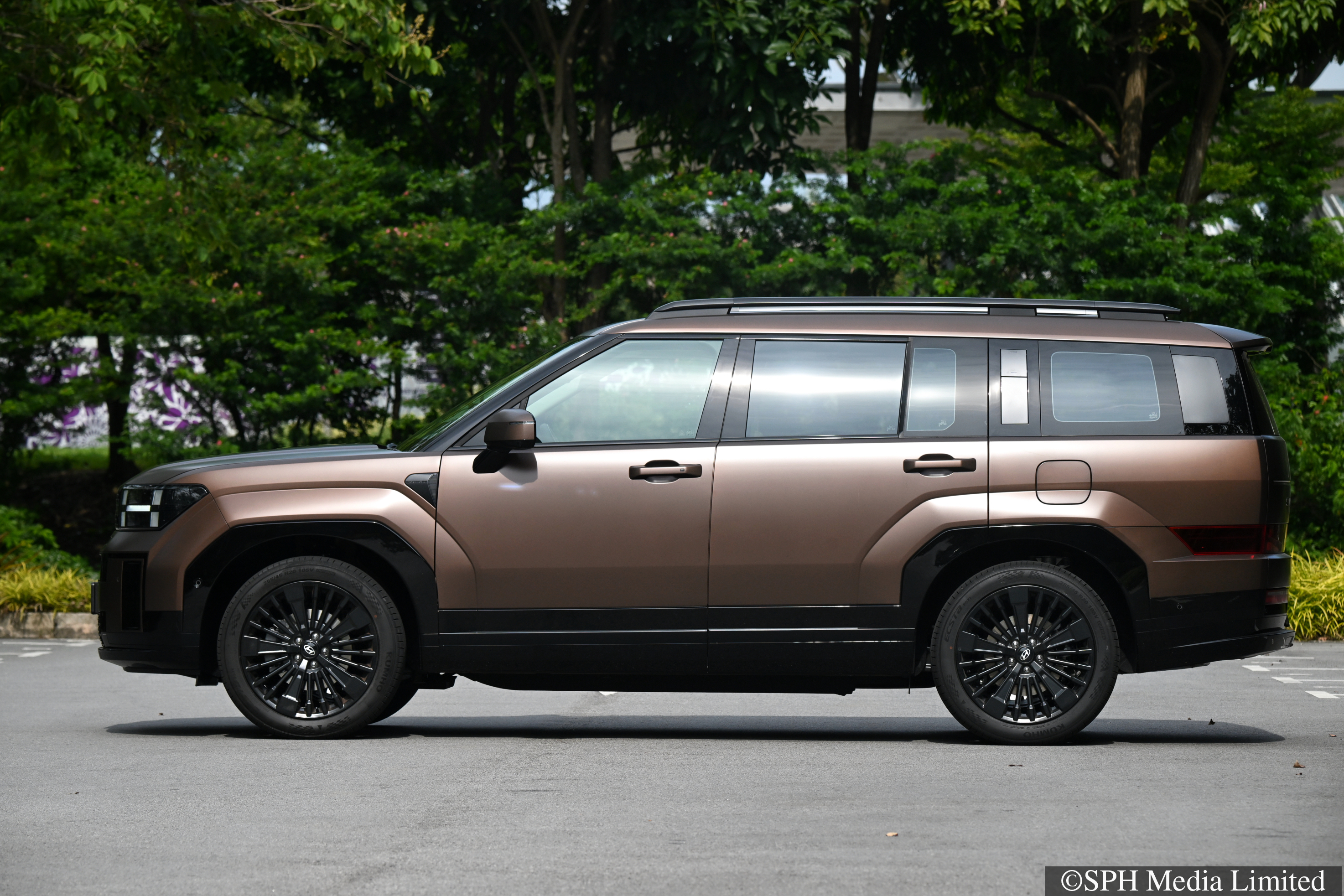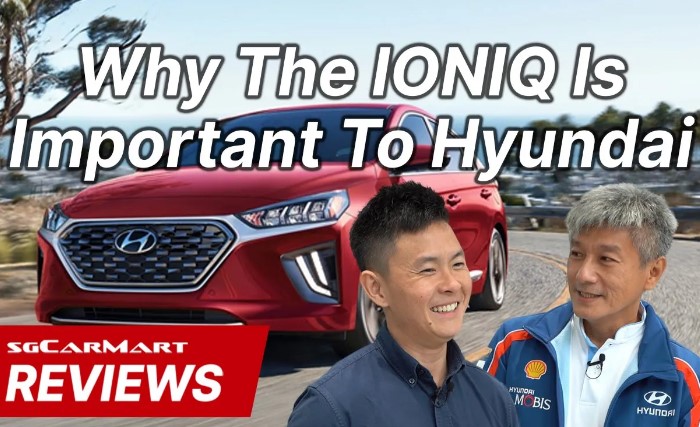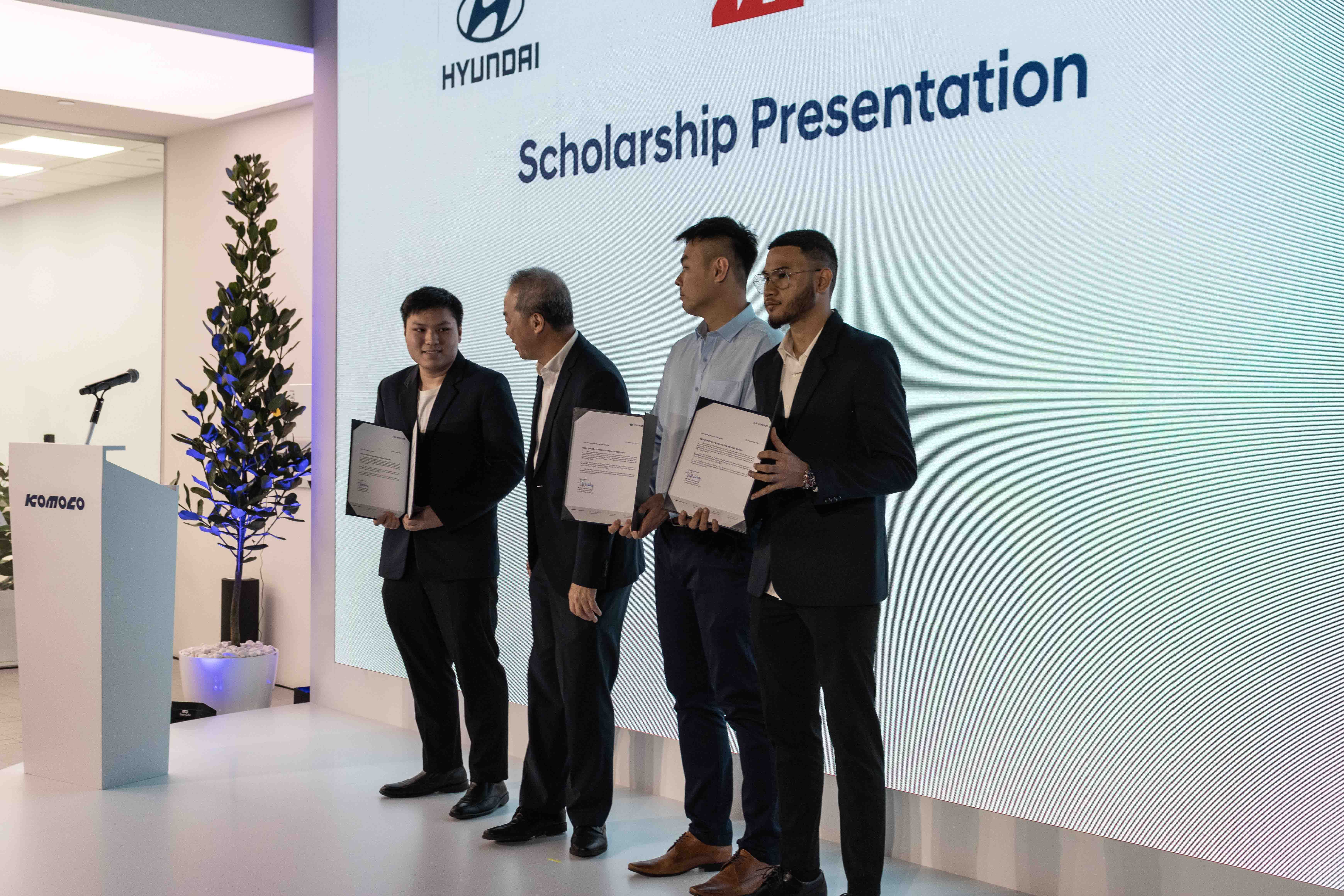SINGAPORE – If you want to make an impressive sport utility vehicle (SUV), start with a decent size and a masculine design. Preferably, look to the iconic Land Rover Defender as a reference.
That seems to have been Hyundai’s formula for its fifth-generation Santa Fe. The SUV with three rows of seats measures 4,830mm long, 1,900mm wide and 1,770mm tall (with roof rails), while sporting a wheelbase of 2,815mm.
That makes it noticeably longer, taller and more spacious than its predecessor. And quite unlike its jellybean-ish predecessor, the new car is decidedly angular. Even its wheel arches – housing 20-inch black-rimmed wheels – are angular.
At a glance, it is hard not to associate this car with the macho and slab-sided Defender.
On the road, the car turns heads with its huge presence. Augmenting its testosterone-infused styling are H-shaped headlamps and an H-motif lower front – quite distinctive.
The distinctiveness continues inside, even though there are elements borrowed from the brand’s Ioniq electric range.
Overall, the cabin is a breath of fresh air with its unique trim, curved display, dual wireless phone chargers and a centre console with ample storage for occupants in the first and second rows.
There is even a UV-C steriliser above the glove compartment – a first in a car. This is handy if you are out in the wilderness and do not have access to soap and running water.
The front seats are ventilated and sport sizeable side bolsters, the second row can slide forward to free up more space for the third row and there is now just about enough room in the third row for slender adults.
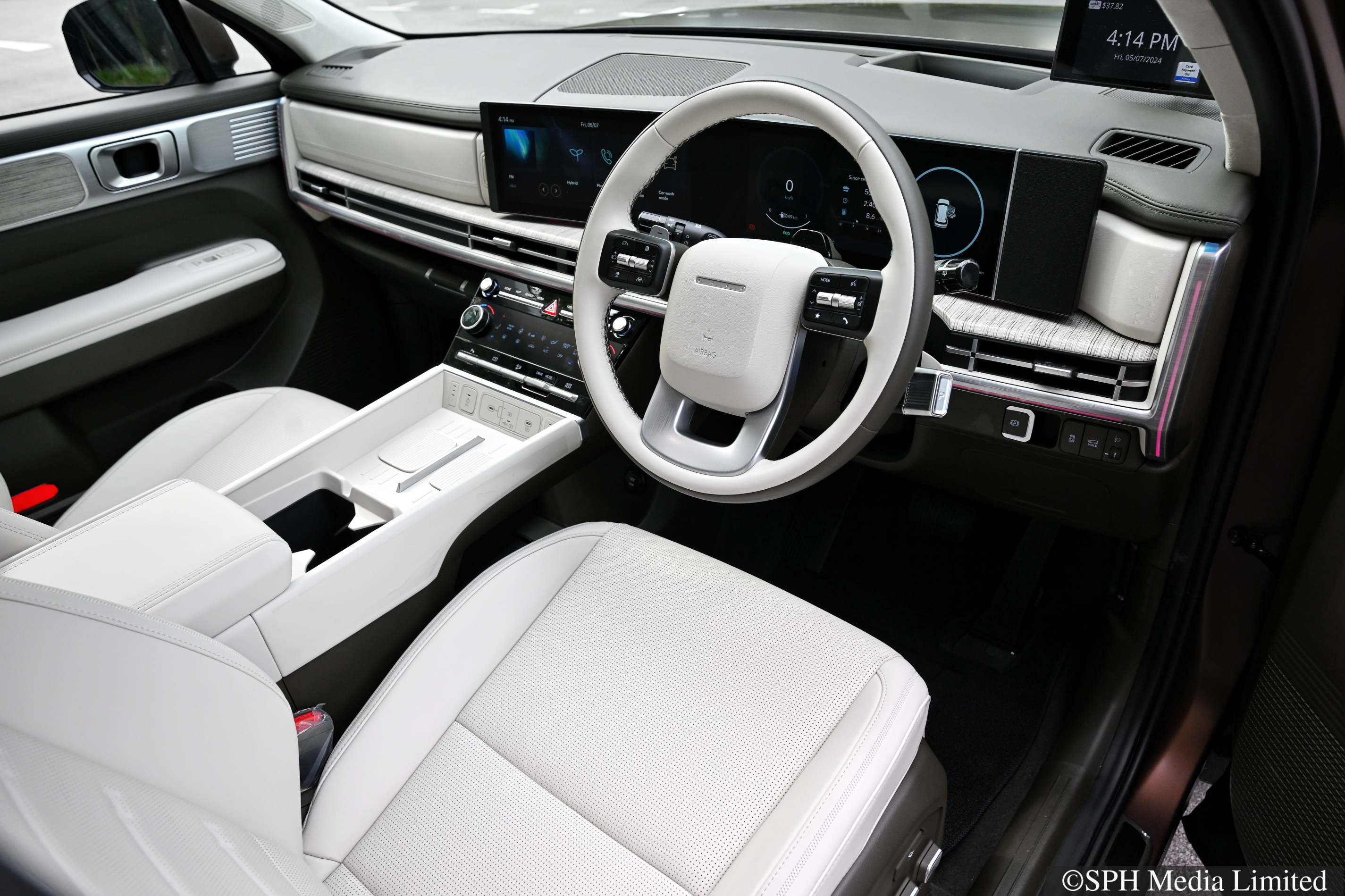
The test car is upholstered in white, with flush geometric latches and levers – all very classy and far more eye-catching than the long list of minimalist electric cars people are seeing.
The main infotainment touchscreen merges with the instrument cluster. The system pairs easily with smartphones and, unlike many other recent test cars, connects automatically and quickly each time you enter the car.
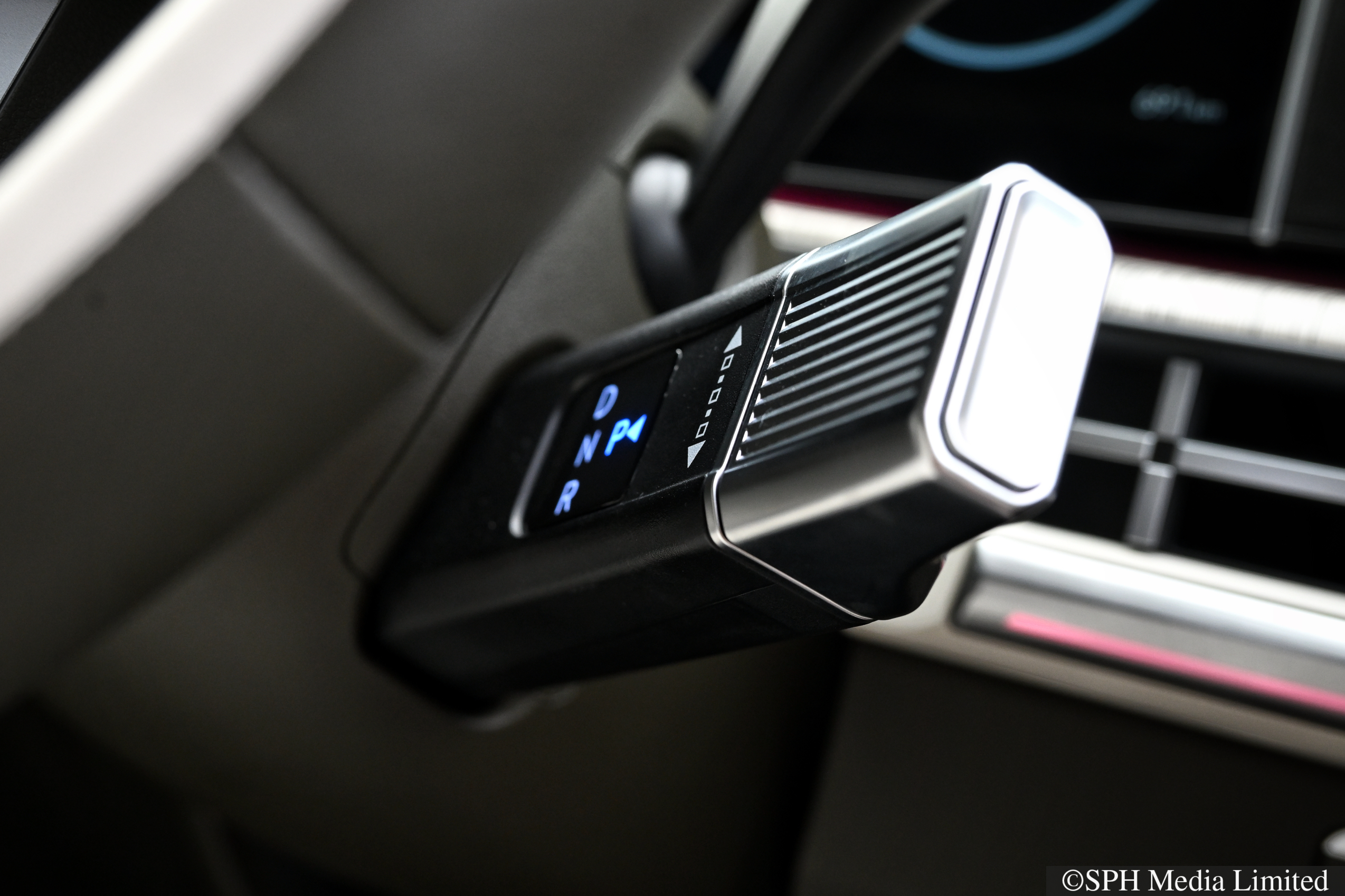
A smaller screen controls the air-conditioning and seat ventilation. Despite having two touchscreens, there are physical tabs for crucial functions such as auto brake hold, assisted hill descent and 360-degree cameras. Two LED-equipped rotary switches control air-conditioning temperature, which, in the Santa Fe, has to be set rather low to tackle the sweltering heat here.
Beneath this delectable display of chic and sophistication lies a drivetrain which has not changed much.
The Santa Fe still relies on a 1.6-litre turbocharged four-cylinder assisted by an electric motor. The power has been pared down a little to meet the latest European emissions standards, but torque has improved both in magnitude and accessibility.
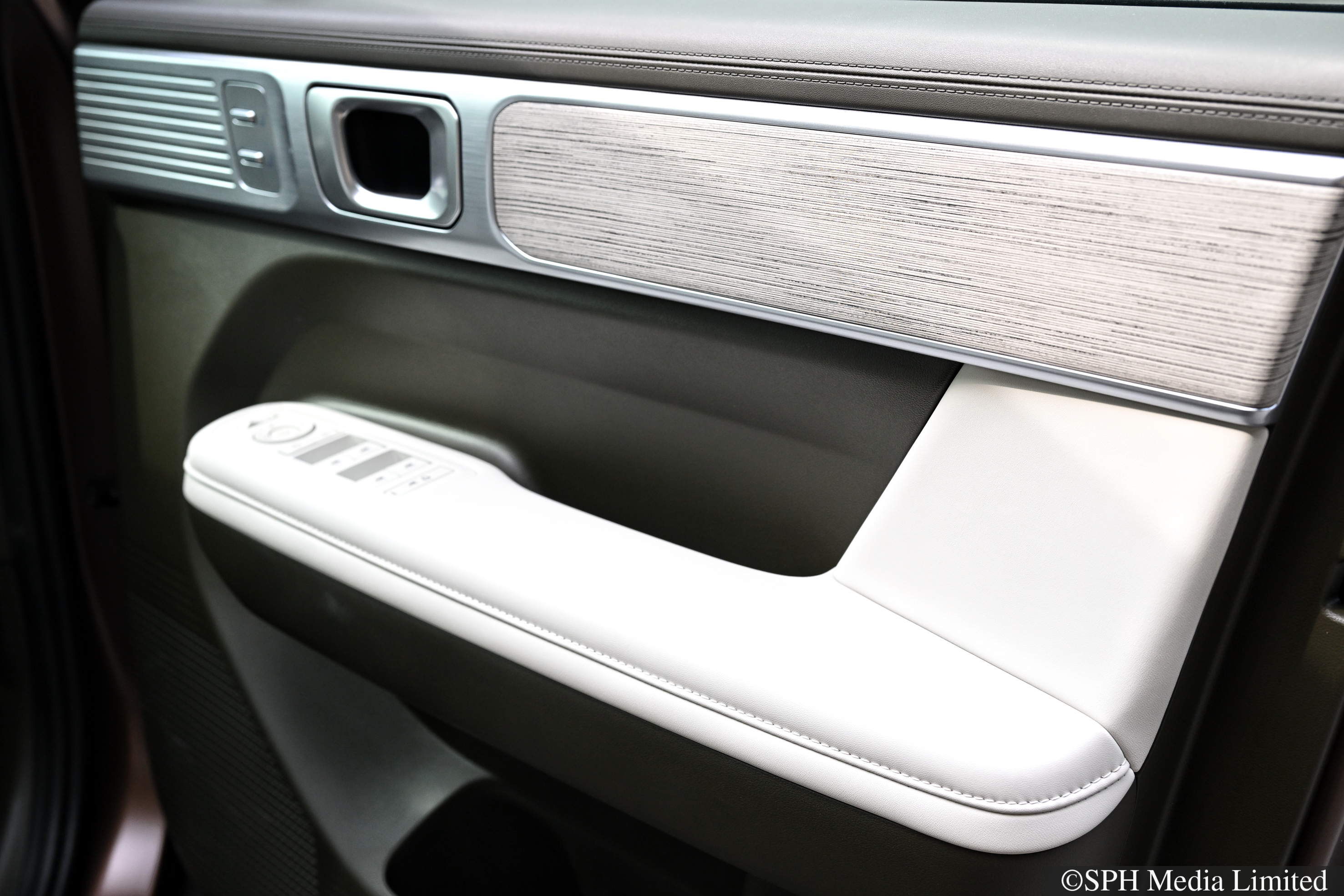
With 367Nm available from 1,000rpm, the bigger car manages to convey adequacy despite a rather leisurely 9.8-second century sprint (almost one second slower than its predecessor). Put your foot down and its six-speed automatic transmission delays shifting up to bring on heaps of revs to keep things lively.
On the move, the 2-tonne Hyundai is reasonably calm, even if there are some muted thumps over bumps which few hefty vehicles without air suspension can avoid completely. Body movements are otherwise well controlled and the SUV is relatively effortless to steer at high speeds or when wiggling through tight turns in a carpark.
The car has an array of tech features, including adaptive cruise control (ACC), driver attentiveness monitor, remote driverless parking and a ping which tells you if headlights are not switched on at night.
The ACC works well on straight roads, but unlike more advanced systems, does not moderate speed around a bend. The driver monitor is overly sensitive and will beep even if you so much as glance at the infotainment screen for a split second.
The remote parking slots in and out of tight perpendicular parking spaces, while the headlight warning should be useful for an increasing number of motorists who drive with just the daytime-running LEDs on.
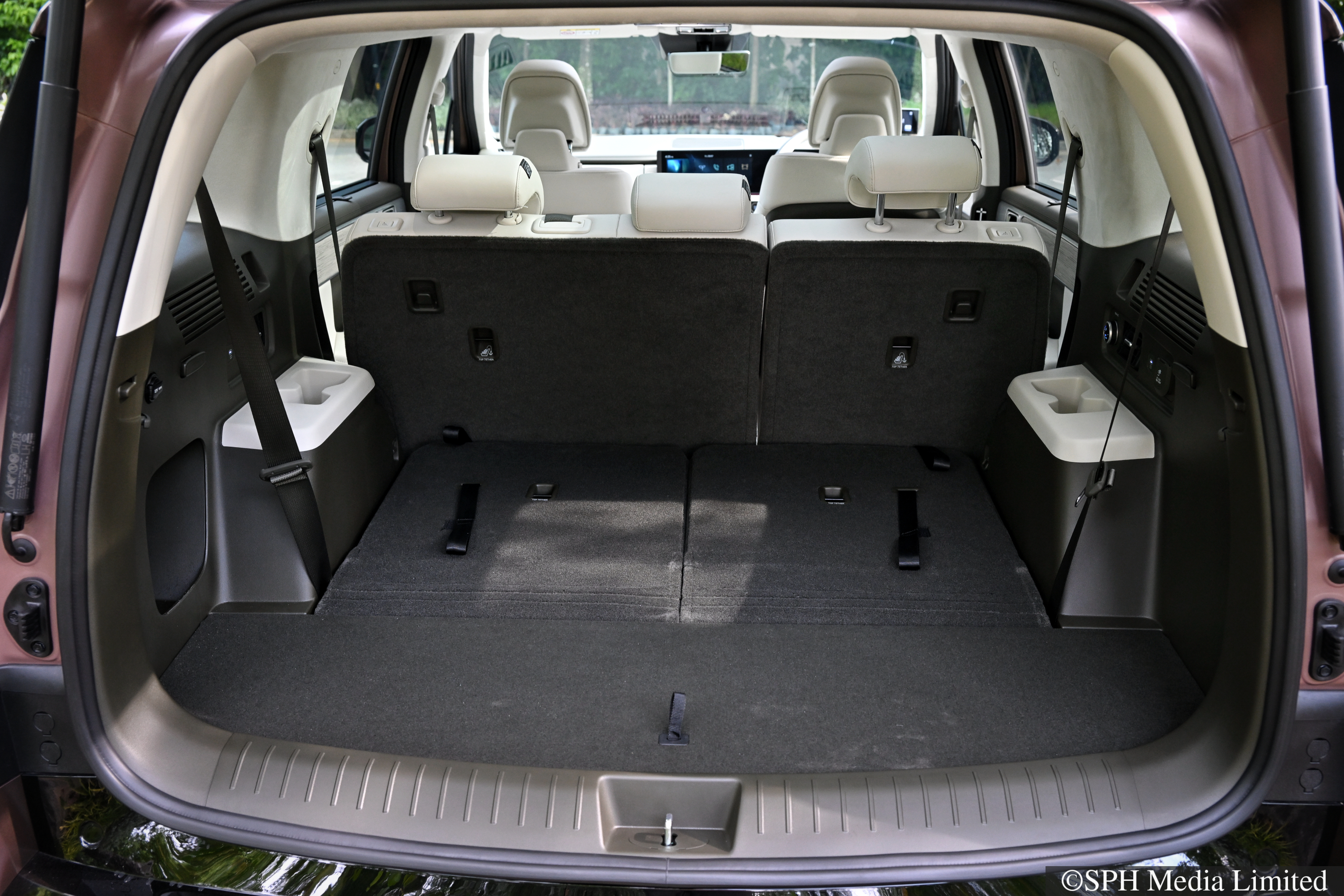
The utility proposition is well catered to. A motorised barn-size tailgate lifts to reveal an enormous boot. With 628 litres of space available when the third row is flattened, you can chuck a bi-fold bicycle in easily without detaching its handlebar.
Like many latter-day Hyundai and Kia cars, the tailgate has a proximity sensor which allows for hands-free access. Unfortunately, this gadget works when you do not want it to and does not when you want it to.
On both C-pillars are hand grips to help you get to the roof rails. The grips are hidden and are accessed via a lock on the rear door frame.
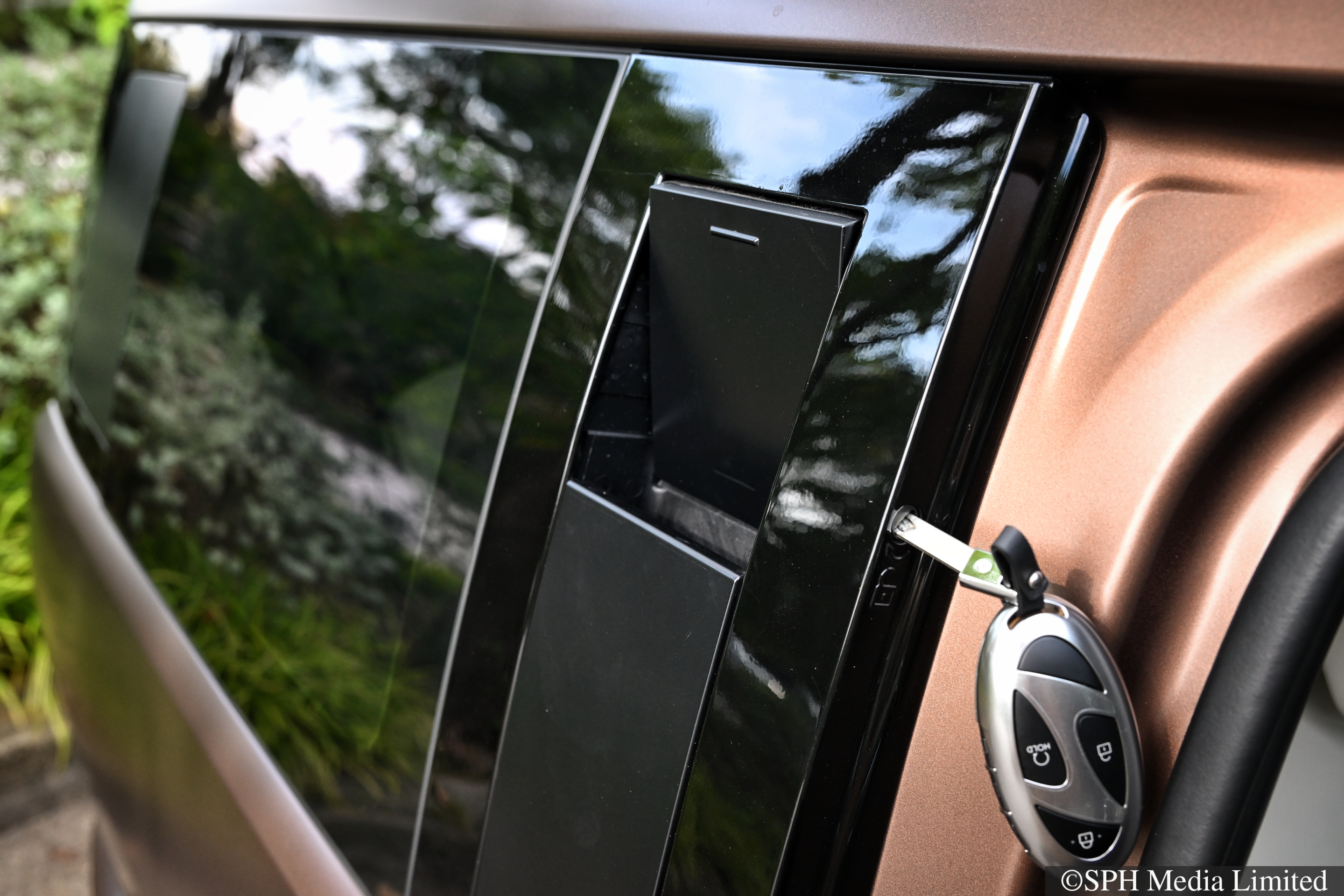
Driven largely in the default Eco mode, the test car averages 7.1 litres/100km, which is very close to Hyundai’s declared 6.9 litres/100km. With its 67-litre fuel tank, the car thus has a range of more than 940km, which is way more than any fully electric car can offer.
The tested average is, in fact, better than the 7.3 litres/100km clocked by its 1.8-tonne predecessor in October 2021. So, it looks like Hyundai has done something right with the drivetrain. It certainly has for the rest of the car.
Technical Specifications
Hyundai Santa Fe 1.6 Hybrid
Price: From $315,999 with certificate of entitlement, before discounts and rebates
Engine: 1,598cc 16-valve inline-4 turbocharged paired with electric motor
Transmission: Six-speed automatic with paddle shift
Power: 215hp at 5,600rpm
Torque: 367Nm at 1,000-4,100rpm
0-100kmh: 9.8 seconds
Top speed: 180kmh
Fuel consumption: 6.9 litres/100km
Agent: Komoco Motors
Rating: 4 out of 5 stars
Source: [The Straits Times] © SPH Media Limited. Permission required for reproduction.
